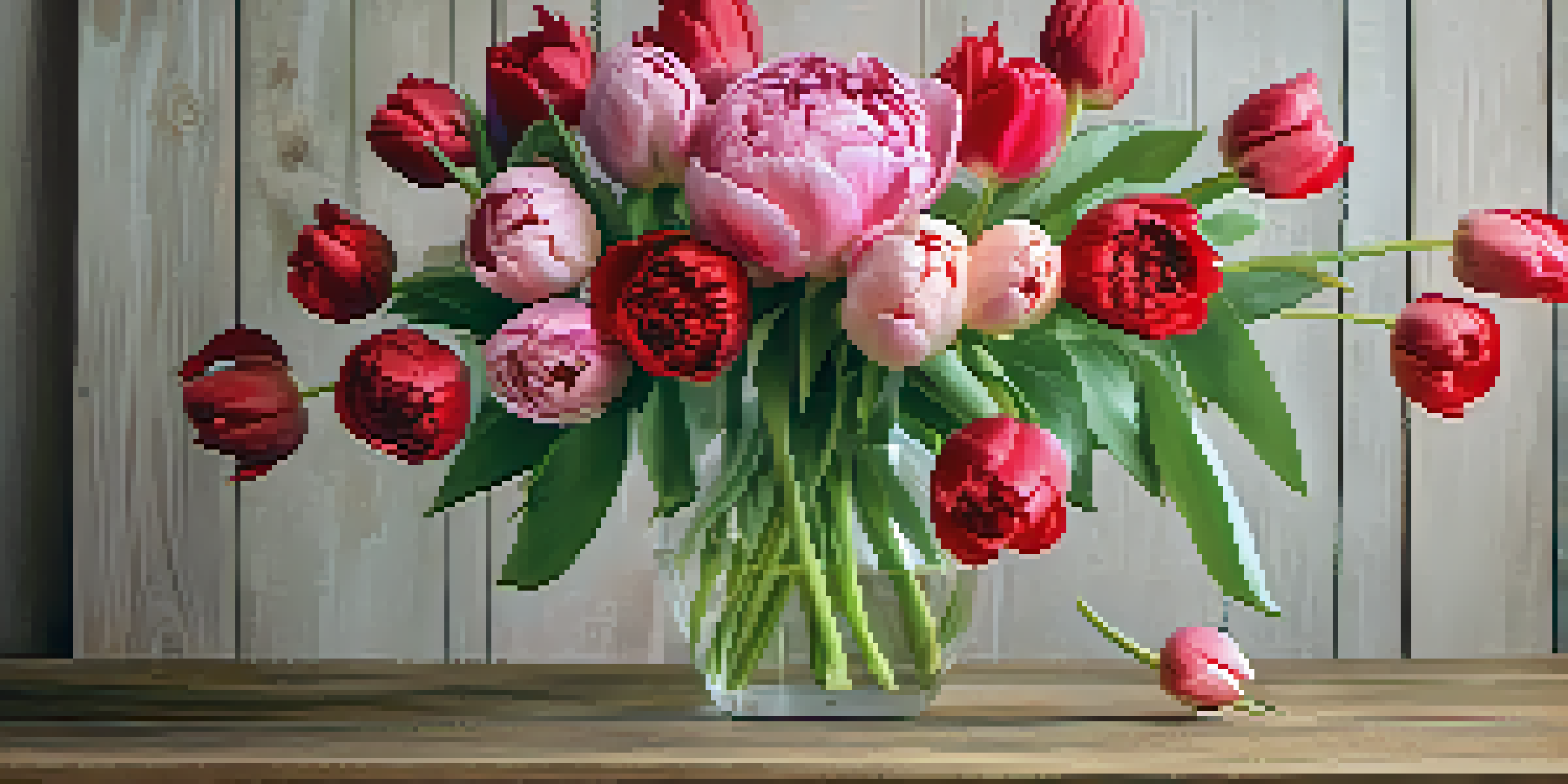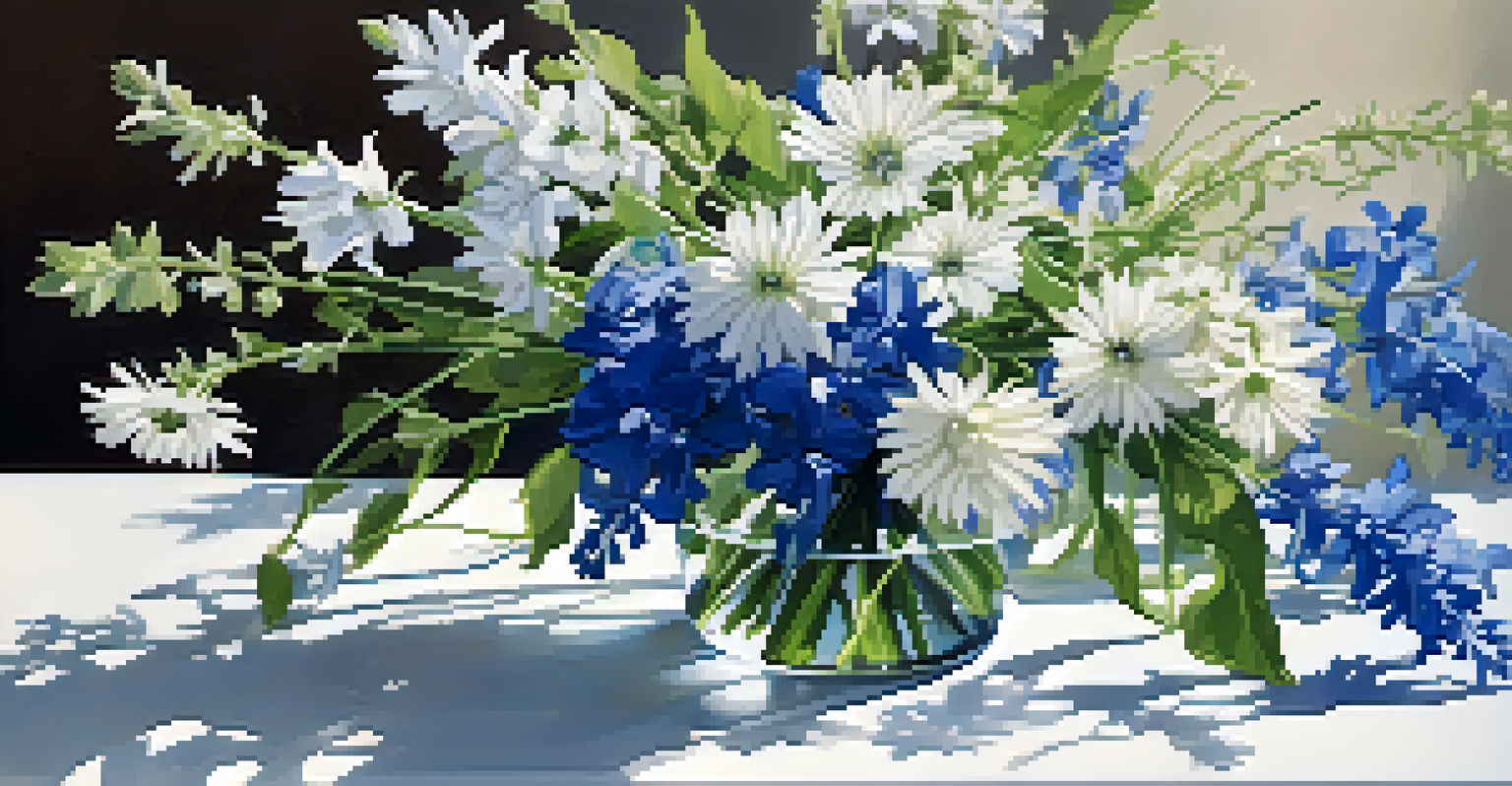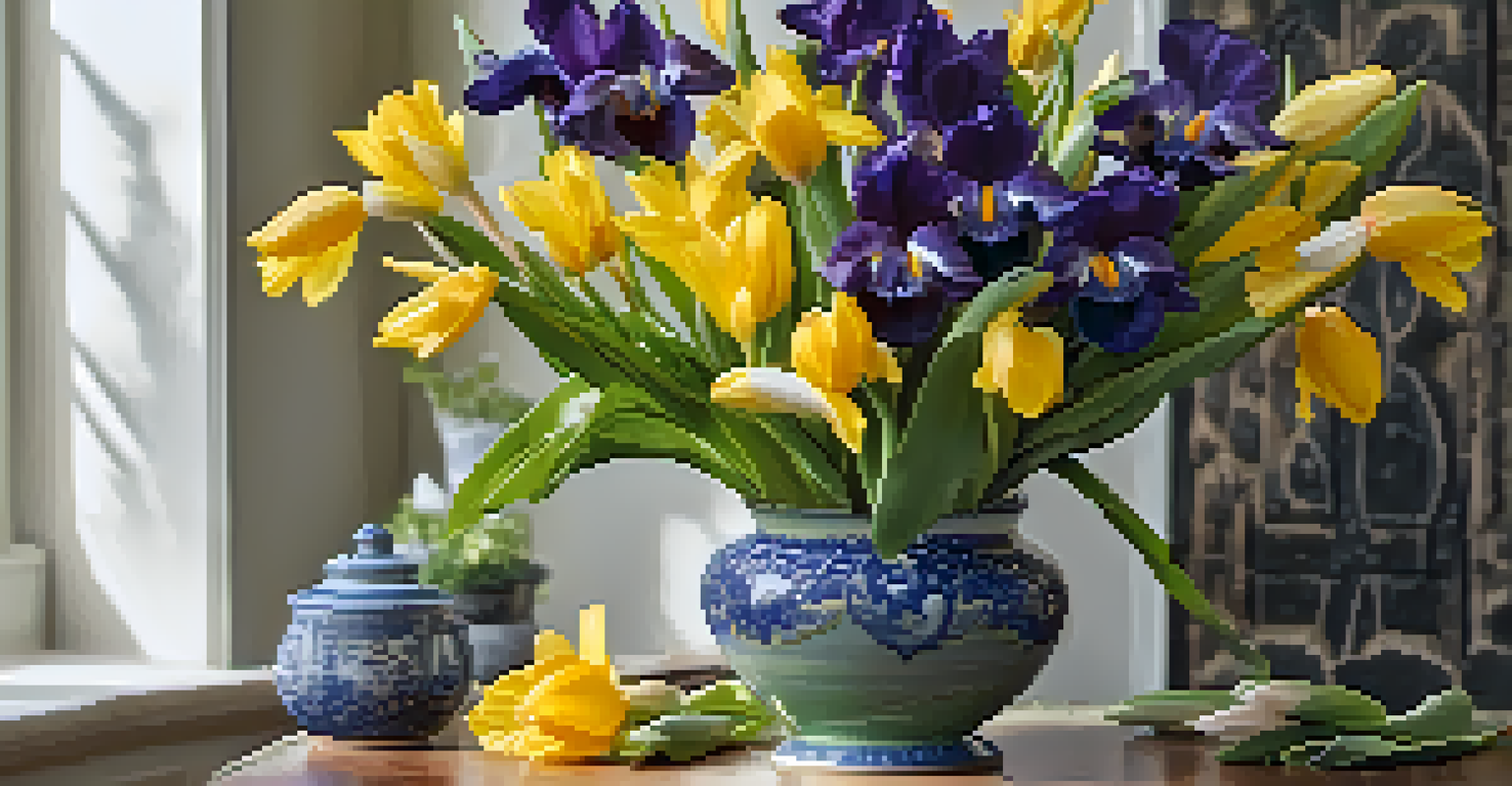Exploring the Principles of Balance in Floral Arrangements

Understanding Balance in Floral Design Basics
Balance in floral arrangements refers to the visual stability achieved through the placement of flowers and elements. Think of it like a seesaw; both sides need to weigh the same to keep it level. In floral design, achieving balance ensures that no one part of the arrangement overwhelms the other, creating a harmonious look.
Flowers are the music of the ground. From earth's lips they speak.
There are two primary types of balance in floral design: symmetrical and asymmetrical. Symmetrical balance is when each side mirrors the other, creating a sense of formality and order. On the other hand, asymmetrical balance allows for a more dynamic and casual feel, giving the arrangement a sense of movement and interest.
Understanding these two types of balance is crucial for any floral designer. By consciously applying these principles, you can create arrangements that not only look beautiful but also convey emotions and messages through their structure.
Symmetrical Balance: Creating Harmony and Order
Symmetrical balance is like the comfort of a well-organized room, where everything has its place. In floral arrangements, this involves placing flowers of equal visual weight on either side of a central axis. This type of balance is often used in formal settings, such as weddings and corporate events, where a polished look is desired.

To achieve symmetrical balance, start by selecting a focal point, such as a large bloom or a unique vase. From there, add flowers and foliage that mirror each other in size, color, and shape. This method not only enhances the visual appeal but also simplifies the arrangement process, as you can easily replicate elements across both sides.
Balance Types: Symmetrical vs. Asymmetrical
Understanding the differences between symmetrical and asymmetrical balance is essential for creating floral arrangements that convey harmony or creativity.
An example of symmetrical balance can be seen in classic bridal bouquets, where roses might be placed evenly around a central flower like a peony. This creates a stunning visual that feels complete and well-thought-out, making it ideal for those looking to make a lasting impression.
Asymmetrical Balance: Embracing Creativity in Design
Asymmetrical balance is where the fun begins! This approach allows for more creativity and spontaneity in floral arrangements, as it doesn’t require elements to match perfectly. Instead, the goal is to create a sense of equilibrium through varied shapes, sizes, and colors, resulting in a more relaxed and organic look.
The beauty of a flower is in its balance of form and color.
To achieve asymmetrical balance, think about the visual weight of each element. A large flower on one side can be balanced by a cluster of smaller flowers on the other. This interplay creates interest and draws the eye across the arrangement, making it feel lively and dynamic.
A perfect example of asymmetrical balance can be seen in a modern, wildflower-inspired bouquet. By combining tall, spiky flowers with low, sprawling greenery, you create a sense of movement that feels both fresh and inviting. This style is particularly popular for casual events and personal bouquets, where personality shines through.
Visual Weight: How Size and Color Influence Balance
Visual weight refers to how heavy or light an element appears in an arrangement, influenced by factors such as size, color, and texture. Just like a dark-colored object seems heavier than a light one, bold, vibrant flowers can draw more attention compared to softer hues. Understanding this concept is key to achieving balance in your designs.
When arranging flowers, consider how the visual weight affects the overall composition. For instance, placing a large, dark flower next to several smaller, lighter blooms can create a sense of imbalance. Instead, try grouping similar weights together or balancing a large flower with multiple smaller ones to achieve harmony.
Visual Weight: Size and Color Matter
The concept of visual weight, influenced by size, color, and texture, plays a crucial role in achieving balance within floral designs.
Using visual weight effectively can elevate your arrangements. For example, in a spring bouquet, pairing a deep purple iris with soft pastel tulips creates contrast while maintaining balance, ensuring neither flower overpowers the other. This thoughtful consideration of visual weight enriches the overall aesthetic of your floral design.
Color Theory: The Role of Color in Achieving Balance
Color theory plays a vital role in floral arrangements, not only for aesthetics but also for balance. Colors can evoke emotions and set the tone of the arrangement. By strategically using color, you can guide the viewer's eye and create a sense of unity or contrast that enhances the overall design.
For a balanced arrangement, consider using a color palette that includes both bold and subtle shades. For instance, a mix of vibrant reds with soft pinks can create a striking effect while ensuring the arrangement doesn’t feel overwhelming. This approach allows for a dynamic interplay of colors, keeping the viewer engaged and interested.
Additionally, contrasting colors can help achieve balance by leading the eye across the arrangement. Imagine a bright yellow flower nestled among deep green foliage; the contrast not only draws attention but also creates a sense of harmony. By understanding and applying color theory, you can craft arrangements that are visually appealing and emotionally resonant.
Scale and Proportion: Key Elements for Balanced Designs
Scale and proportion are essential components of floral arrangements that directly impact balance. Scale refers to the size of individual elements in relation to the overall arrangement, while proportion focuses on the relationship between the different components. Mastering these concepts ensures that your designs feel cohesive and well-structured.
When selecting flowers and materials, consider how their sizes relate to one another. A towering sunflower can look stunning, but if paired with tiny daisies, it may disrupt the balance. Instead, introduce other large blooms or greenery to create a more harmonious look, ensuring that all elements feel connected and intentional.
Scale and Proportion Ensure Cohesion
Mastering scale and proportion helps ensure that all elements in a floral arrangement feel connected and intentional, enhancing overall balance.
Proportion also involves the distribution of flowers throughout the arrangement. For example, if you have a large centerpiece, consider using smaller accents around it to maintain balance. By focusing on scale and proportion, you can create floral arrangements that are not only beautiful but also thoughtfully composed.
Final Tips for Achieving Balance in Floral Arrangements
Achieving balance in floral arrangements requires a blend of creativity, intuition, and practice. One of the best tips is to take a step back and assess your arrangement from different angles. This allows you to see if any areas feel too heavy or sparse, giving you the opportunity to make adjustments before finalizing your design.
Don't be afraid to experiment! Sometimes, the most stunning arrangements come from breaking the 'rules' of balance. Play with asymmetry, try unexpected color combinations, or mix textures to discover what resonates with your style and vision. The beauty of floral design lies in its fluidity and personal expression.

Lastly, remember that balance isn’t about perfection; it’s about creating a feeling of harmony. Trust your instincts and let your creativity flow as you explore the principles of balance in your floral arrangements. With practice, you’ll find your unique style and create stunning designs that truly reflect your artistic voice.